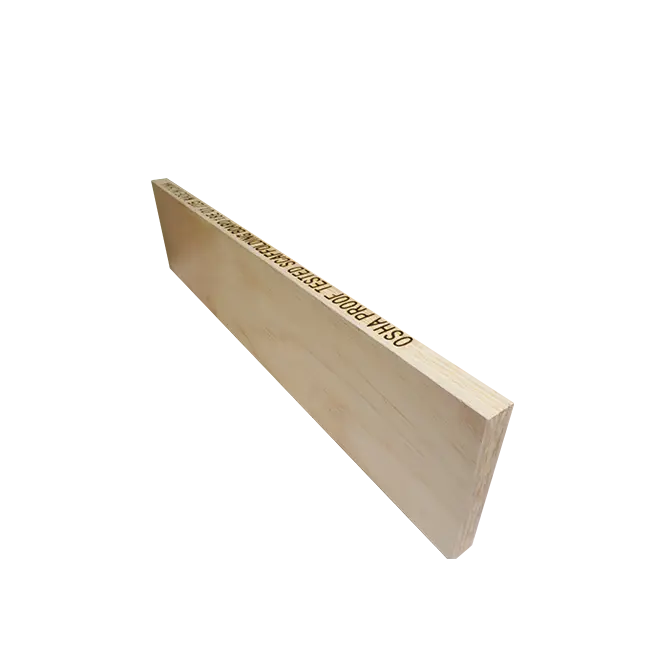LVL scaffolding boards are used in various construction activities, including building, cleaning, and maintaining bridges and buildings. Besides the construction industry, LVL boards are also used in industrial settings and by utility companies for tasks that require elevated work platforms. Their uniformity ensures a safe and stable working platform.
| Tree Species | Radiata pine/Pinus massoniana | |
Dimension | Thickness | 38/42mm |
| Width | 225/230mm | |
| Length | 3/4/6m | |
| Moisture Content | 5-16% | |
| Glue | Phenol Formaldehyde/Melamine glue | |
| Standard | OSHA | |
Compared with the traditional solid wood scaffold board, LVL scaffolding has the following advantages:
Increased strength and stability: Laminated veneer laminates enhance their strength and stability, making them less susceptible to deformation, distortion or bending.
Uniform strength: Unlike solid wood, which can have natural defects such as knots and cracks,LVL scaffolding are manufactured to eliminate these defects and ensure consistent performance across all boards used in the project.
Light: Despite its high strength, LVL scaffolding are relatively light in weight, which simplifies handling and installation and can improve the efficiency of construction sites.

LVL scaffolding comply with stringent safety standards such as OSHA and ANSI, ensuring a safe working platform for construction workers.
Fuqing LVL scaffolding are used for a variety of construction activities, from building and repairing Bridges to cleaning and maintenance of tall buildings. In addition to construction, LVL scaffolding are also used by industrial environments and utility companies for tasks requiring elevated work platforms.